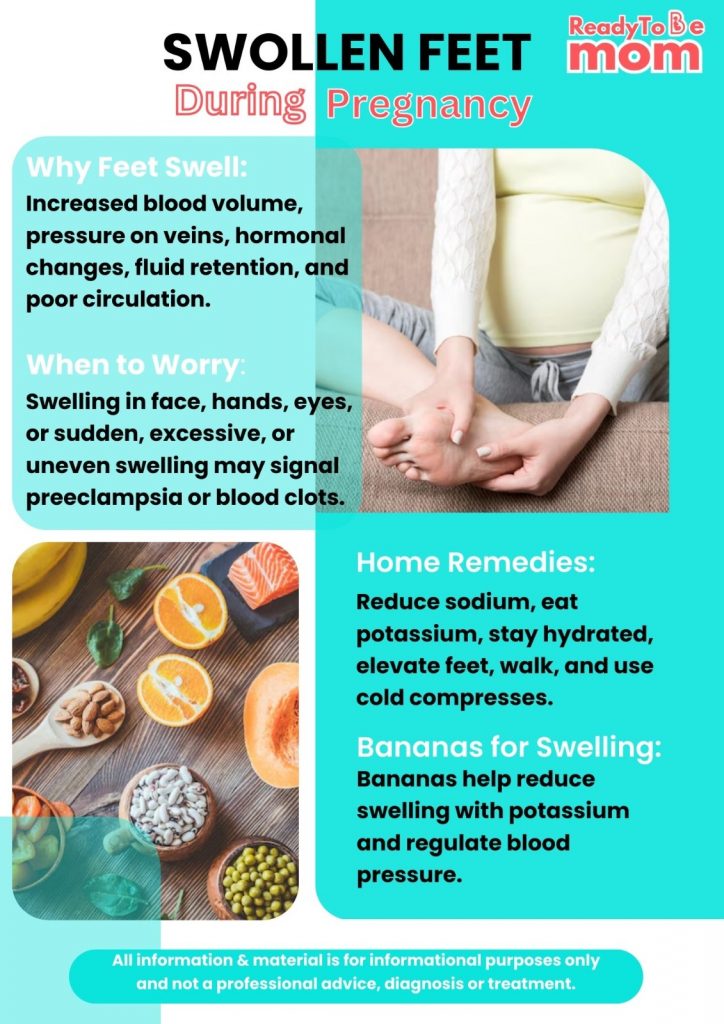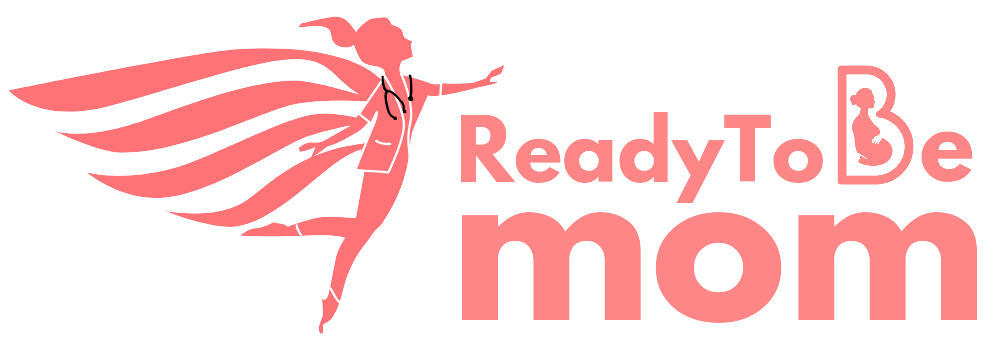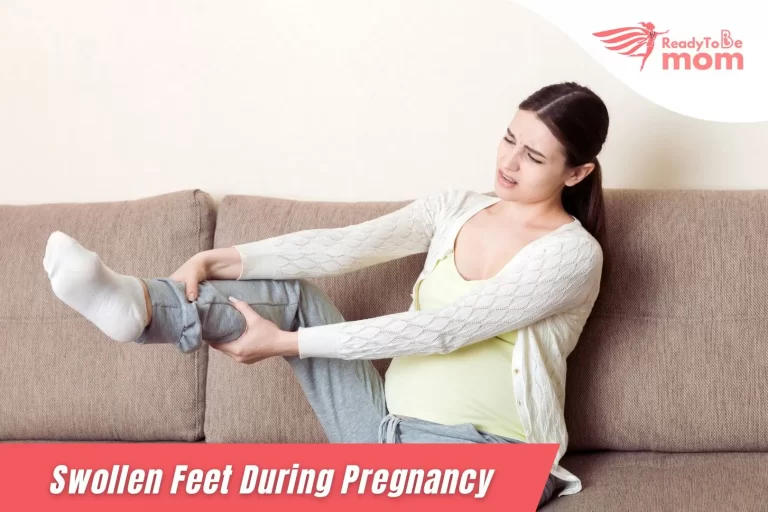Swelling in the feet, or edema, is a common experience during pregnancy, particularly in the third trimester. This often happens as the body retains extra fluid to support the growing baby, while the expanding uterus puts pressure on the veins, slowing blood flow from the legs to the heart. Hormonal changes also play a role, leading to fluid retention and causing puffiness and pregnancy swollen feet, ankles, and sometimes the hands. Many expectant mothers may find comfort in traditional remedies like resting with their feet elevated or using cold compresses to reduce feet swelling while pregnant.
Why does feet swelling during pregnancy occur?
- Increased blood volume: Pregnancy causes an increase in blood and fluid volume to support the growing baby.
- Pressure on veins: The uterus expands and exerts pressure on the veins, particularly the inferior vena cava, which returns blood from the legs to the heart.
- Hormonal changes: During pregnancy, elevated progesterone levels relax the walls of blood vessels, which can lead to fluid retention and reduced circulation. This relaxation allows fluid to leak into surrounding tissues, causing swelling or edema, especially in the feet, ankles, and legs, as the pregnancy progresses.
- Fluid retention: Your body retains more fluids, causing swollen feet and ankles during pregnancy.
- Reduced circulation: As pregnancy progresses, circulation can become slower, causing fluids to pool in the lower extremities.

How long and how frequently should I elevate my feet during pregnancy to reduce swelling?
To reduce swollen feet and ankles during pregnancy, it’s recommended to elevate your feet for 15- 20 minutes several times a day. Elevating your feet above heart level can help improve circulation and reduce fluid buildup and swelling of legs and ankles during pregnancy. You can do this by lying down with pillows under your legs or using a recliner. It’s especially helpful to elevate your feet after standing or sitting for long periods. Be sure to change positions frequently, stay hydrated, and avoid crossing your legs, as these measures can further alleviate swelling and promote comfort during pregnancy.
When is swelling a cause for concern during pregnancy?
Most women deal with swollen feet and ankles during pregnancy at some point, which is totally normal. But sometimes, swelling can be a sign of something more serious. You should contact your doctor immediately if –
- If you have swelling in your face, hands or around the eyes
- You have sudden swelling anywhere
- One leg is more swollen than the other
- The swelling is there when you wake up and doesn’t subside when you rest
- The swelling is more than usual
When should you be worried about swelling during pregnancy?
While swelling of legs and ankles during pregnancy is common and usually harmless, there are times when it may signal a more serious condition.
Preeclampsia – is a pregnancy-related condition marked by high blood pressure and often protein in the urine. It usually develops between 24 and 27 weeks but can happen any time after 20 weeks.
Deep Vein Thrombosis (DVT) – Deep vein thrombosis (DVT) can occur during pregnancy due to increased pressure in the veins and changes in blood flow. Pregnant women are more prone to blood clots, especially in the legs. Symptoms include swelling, pain, and warmth. It’s important to seek medical help if these symptoms arise.

10 Home Remedies for Swollen Feet during Pregnancy
Swollen legs, feet and ankles are one of the common discomforts during pregnancy. However, you can ease the swelling by boosting your potassium intake, staying well-hydrated, and elevating your feet regularly. A gentle foot and leg massage can also provide relief.
- Reduce sodium intake – One way to reduce swelling in the legs during pregnancy is to reduce sodium intake. High sodium levels cause the body to retain excess fluid, leading to increased swelling, especially in the legs and feet. To reduce sodium, avoid processed and packaged foods like chips, chivda, instant noodles, as these often contain high levels of salt. Opt for fresh fruits, vegetables, and homemade meals with minimal added salt.
- Increase potassium intake – Potassium can also be of big help during pregnancy. It plays a key role in balancing fluid levels in the body, which helps prevent water retention and reduces swelling. Foods rich in potassium, such as bananas, avocados, spinach, sweet potatoes, and oranges, are excellent choices for expectant mothers. Including these in your daily diet can help regulate electrolyte levels, improve circulation, and minimize fluid buildup in the legs and feet.
- Reduce caffeine intake – Reducing caffeine intake during pregnancy can help decrease swelling in the feet. Caffeine is a diuretic, which can lead to dehydration, causing the body to retain more fluids, contributing to swelling. Limiting your consumption of coffee, tea, soda, and other caffeinated drinks can help manage fluid balance and reduce swelling in the feet and legs. Opt for water, nimboo paani (lemon water), herbal teas, or other caffeine-free beverages to stay hydrated.
- Stay hydrated – Staying hydrated is essential for reducing swelling in the feet during pregnancy. When the body is dehydrated, it holds on to extra fluid, leading to water retention and swelling, especially in the legs and feet. Drinking plenty of water helps flush out excess fluids and keeps the body’s systems functioning properly. Aim for 8-10 glasses of water daily, and adjust your intake based on activity levels and weather.
- Elevate your feet and rest – Elevating your feet and getting proper rest can significantly reduce swelling in the feet and ankles during pregnancy. Raising your feet above heart level helps improve blood circulation, preventing fluid from pooling in your lower limbs. Use a small stool or pillows to prop up your feet while relaxing or even during household tasks. Avoid prolonged standing, especially while cooking or cleaning, and take regular breaks to rest. Elevating your feet for 15-20 minutes multiple times a day can help reduce swelling and provide relief, especially in the later months of pregnancy.
- Wear loose, comfortable clothing – Wearing loose, comfortable clothing, including maternity dresses, is essential for reducing pregnancy feet and ankle swelling, especially where temperatures are high. Tight or restrictive clothing can impair blood circulation, leading to fluid retention and increased swelling. Maternity dresses made from light, breathable fabrics like cotton or muslin are ideal as they allow better airflow and comfort. In addition to choosing loose attire, avoid tight socks or leggings, which can constrict blood
flow. Opting for comfortable, flowy clothing helps ease pressure on your body and supports healthy circulation, making it easier to manage swelling during pregnancy. - Walk – Walking can help reduce swelling in the feet during pregnancy by promoting better circulation and preventing fluid buildup. Regular, gentle walks encourage blood flow and help manage fluid retention. Aim for short, daily walks to alleviate swelling and support overall well-being while staying active and comfortable.
- Sleep on your side – Sleeping on your side, especially the left side, can reduce swelling in legs and ankles during pregnancy by improving blood circulation and relieving pressure on veins. This position enhances blood flow to the heart and kidneys, helping to prevent fluid buildup in the legs and feet, and supports overall comfort during pregnancy.
- Foot massage – A foot maalish (massage) can effectively reduce swelling during pregnancy by boosting circulation and easing fluid retention. Gently massaging your feet with upward strokes helps improve blood flow and reduces discomfort. Using traditional oils like coconut or sesame can enhance the soothing effect and promote relaxation.
- Cold Compress – A cold compress can help reduce swelling in the feet during pregnancy by constricting blood vessels and easing fluid retention. Apply a cold, damp cloth or ice pack wrapped in a handkerchief to swollen areas for 10-15 minutes. This remedy can provide relief and soothe discomfort.
Do bananas help reduce swelling in feet during pregnancy?
Yes. Bananas can actually help with foot swelling during pregnancy by keeping your electrolytes balanced and giving you a boost of vitamin B6, which is great for your nerves and skin. Try having 2-3 bananas a week – it’s a simple way to stay healthy during pregnancy!
Bananas can also be a great snack during pregnancy because they are full of nutrients and can help with many pregnancy-related issues:
- Vitamin B6 in bananas is important for the development of the baby’s brain and nervous system.
- Bananas are high in fiber, which can help with constipation that can occur during pregnancy.
- Provides natural energy boost from their carbohydrates and sugars.
- It can help relieve nausea and vomiting.
- High potassium content helps prevent leg cramps
- Regulates blood pressure
- Supports healthy weight gain
Read More On
23 Common Early Pregnancy Symptoms
5 Early Pregnancy Symptoms Recognizing the Telltale Signs
(1) Missed Period and Hormone-related symptoms
(2) Nausea, Vomiting and Gastrointestinal Symptoms
(3) Breast and Urinary Changes
(4) Distaste & Avoidance of Food, Cravings, heightened Sense of smell Symptoms
(5) Spotting and Cramps, back Pain and other related Physical discomfort.





